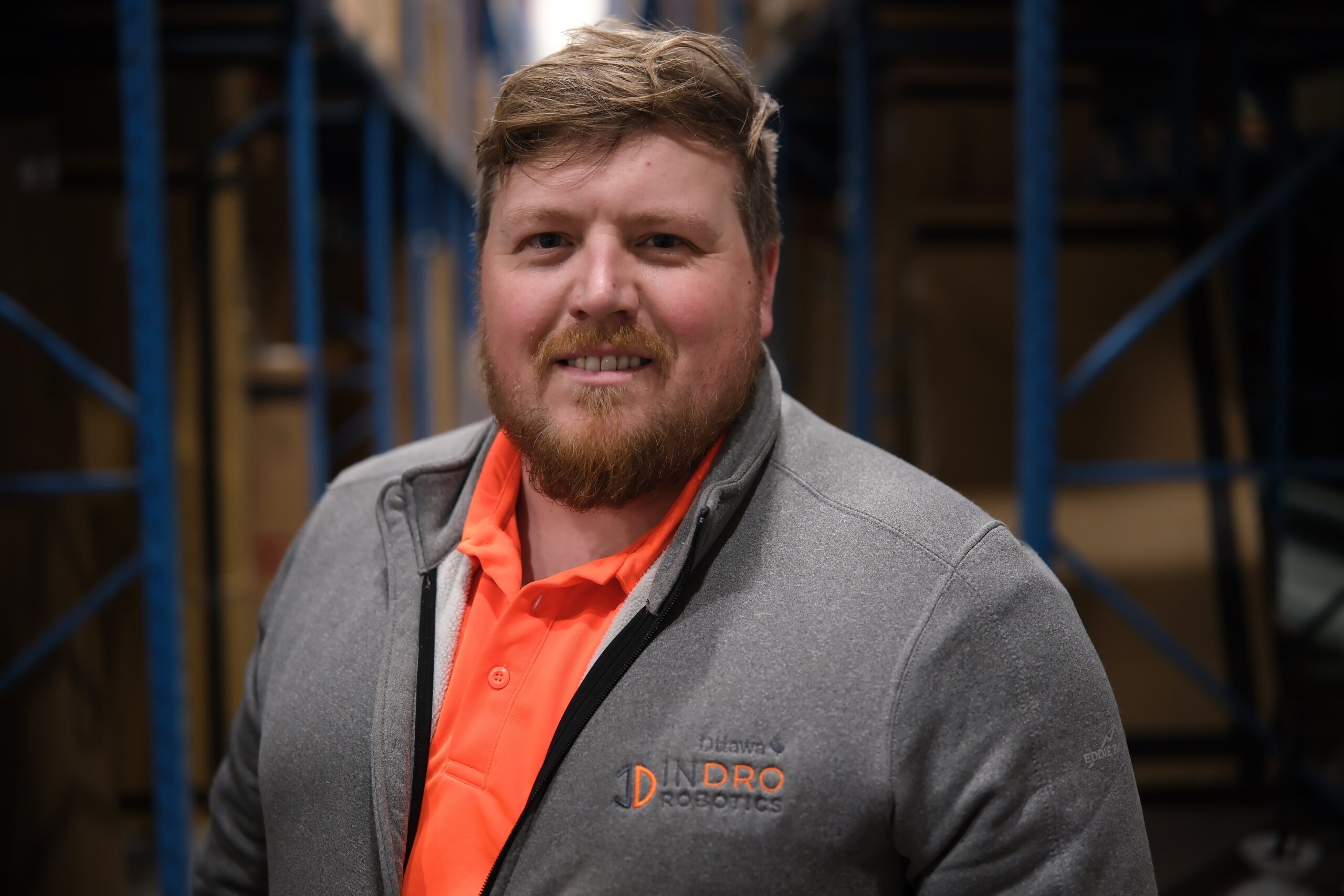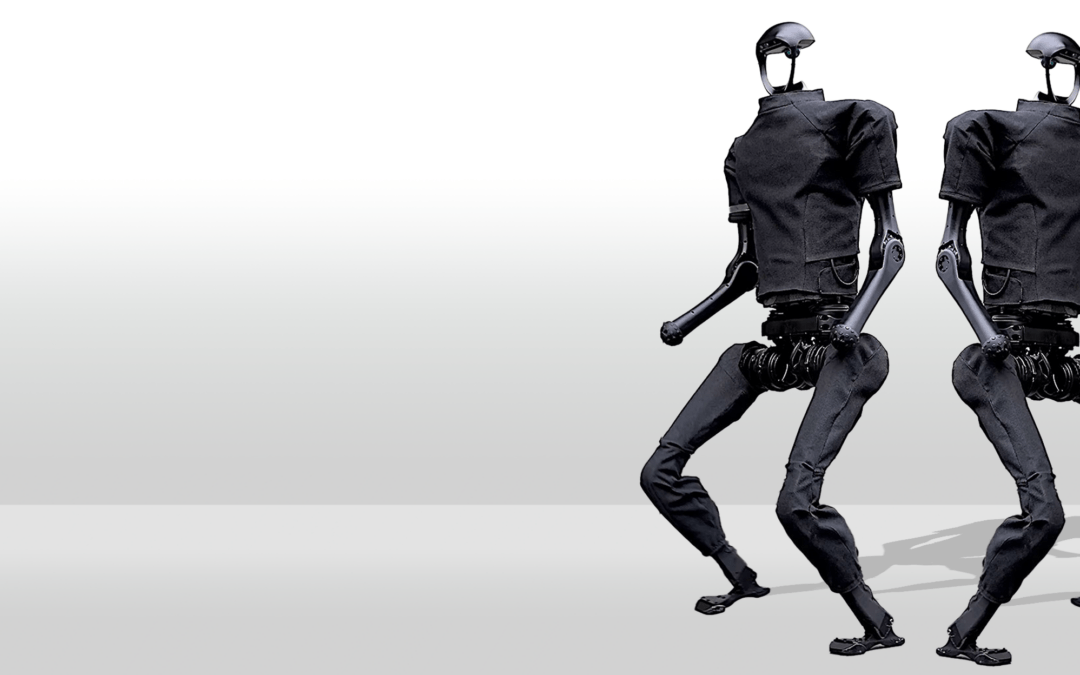By Scott Simmie
The robots are coming. And, in many places, they’re already here.
Robotic automation has long been integral to manufacturing at scale. Think automobile factories, for example. Robotic arms weld, paint, lift heavy parts – all jobs that at one point in the past were done by humans. We’re all familiar with videos of this process.
But in recent years, we’ve seen something of an inflection point in robotics. Autonomous Mobile Robots (AMRs) are increasingly common, shuttling goods and lifting heavy loads. There are robots that can load and unload trucks, using special grippers or end effectors. Delivery robots are ubiquitous in some parts of the world, with China leading the pack. And then there’s drones, with companies like Zipline seemingly perfecting the art of small deliveries and shifting from solely medical deliveries to convenience items. Automated devices now unload and place containers from ships – an innovation that led to labour disruptions as longshoremen in the US protested that these machines jeopardise their livelihoods,
The list goes on. And, with the growth now of humanoid robots – which require no infrastructure changes and can carry out many tasks done by humans – the inevitable question arises: Will robots someday replace humans at scale?
It’s a big question. And, for some, kind of a scary one. So we thought we’d explore some thoughts, and predictions, with someone thoroughly in the know: InDro’s Director of Engineering, Arron Griffiths (below).

A GOOD SOURCE
We tapped Arron not only because he’s our Director of Engineering, but because he has lived and breathed technology his entire life. Born in Birmingham, he comes from a line of engineers and technologists that goes way back. In fact, because of his father’s profession his family was the first in his neighbourhood to have the internet, and Arron grew up with computers.
“My father is an internet engineer and my grandfather was a welder by trade, and then his father was an engineer and we think his father was an engineer,” says Griffiths. “There’s a lineage on my dad’s side of engineers and skilled trades we believe going all the way back to being tinkerers or something.”
So it’s not surprising that an engineer who has spent decades in robotics spends a lot of time thinking about robots. Not just the mechanics and software – but about their implications. So we asked him: Will robots replace humans at scale?
“It is basically a fear of everyone around robotics, particularly AI as well,” he says. “The answer is yes and no – and let me elaborate a little bit.”
He does so, with a long-term perspective.
“Every Industrial Revolution has caused disruption in some form or another and displaced humans from classical (tasks) in agriculture or industrial manufacturing…so there is definitely going to be a painful period where robotics is adopted, and jobs that were once held by humans get sort of outpaced.”
The driving force here, as with previous Industrial Revolutions, is economics. If a robot can efficiently carry out tasks at a lower overall cost than humans, the case is there for them to be adopted.
“But the trick is to ensure that the economy is growing at the same time. And if the economy is growing, there will always be the need for more people.”
And if the economy doesn’t grow?
“That’s the real scary part. If the economy doesn’t grow with the scale of robotics adoption, then there would be significant disruption, maybe even humans resisting robotics. But if everything grows at a good rate, I think robotic adoption will take maybe 10 years, but there will be a rough patch.”
WE’VE BEEN HERE BEFORE
Remember when Automated Teller Machines were introduced at scale back in the 1970s? There was consternation that tellers would become obsolete. That didn’t happen. Yes, they were convenient for a fast withdrawal or deposit, but ATMs can’t answer questions, can’t assist people with the many reasons they go to a bank. And so yes, every bank has one of those machines. But they also still have tellers.
The same concerns popped up when automated checkouts started appearing at retail outlets. Would sales staff and checkout people disappear? They haven’t (though it’s possible some companies have downsized their staff). But again, automation did not simply replace humans.
A big part of the reason is because human interaction is at the very core of many businesses and our daily lives – and robots are not even close to reaching the stage of handling those complex interactions. Human beings possess qualities that robots do not, at least not yet. Things like creativity, emotional intelligence, the ability to adapt to unforeseen situations.
“Humans are still always going to be needed because we’re never going to be able to get robots in the near term to think, feel, imagine, communicate quite like a human with other humans directly,” says Griffiths. “So yeah, I think humans definitely have a one up and will have that advantage for the foreseeable decade or so.”
The other thing Griffiths points out is that robotics are definitely more prevalent in more technologically developed parts of the word – and there are huge swaths of the planet where they are relatively rare and that adoption will take a very long time.
“In Western industry, we’ll definitely see a lot more automation. But in emerging markets like Africa, India, (they’re) still going to rely on humans. So it depends on where you are in the world, I think.”
The caveat? It used to always be said that robots are perfect for jobs that are dirty, dull and dangerous. That’s still true. But with advances in AI and Large Language Models (as well as the development of humanoids and other collaborative robots, or co-bots intended to work alongside humans) we are potentially at the early stages of a shift. Robots will, in future, take on more tasks that aren’t simply one of the three Ds.
Below: Agility’s Digit, showing off its ability to pick up ingredients for a pasta dinner. Yes, it’s slow. But you can be confident it will get faster, Still, we’re willing to bet most people will prefer to do their own shopping. A robot can’t make the split-decisions a human is likely to make when selecting one product over another, for example.
INDRO’S TAKE
We are definitely in changing times. Advances in robotics will continue – and most of the current demand is indeed for robots that can carry out those dirty, dull and dangerous jobs. But, over time, we’ll see more of them carrying out other tasks and developing greater problem solving skills – including (with AI) the ability to communicate more easily with humans.
But are we on the cusp of an era where there will be mass displacement of humans?
“There will be some disruption in the future for sure,” says InDro Founder and CEO Philip Reece. “But, as we’ve seen with previous Industrial Revolutions and the adoption of ATMs etc, the sky didn’t fall. There will also be more jobs created in robotics, AI, and other related fields we can’t even foresee yet. Will robots continue to expand in fields where they can help humans and productivity? Absolutely. But human beings are resilient, creative and adaptable. And – though I’m obviously a fan of what robots can do – there will always be a human advantage. Yes, the robots are coming. But they’re not going to rule the world.”
InDro, by the way, focuses on custom R&D and robots for clients and our own inspection and scanning products that cater to the dirty, dull and dangerous. We’re not out to replace your job – only to enhance productivity where it’s a fit.

